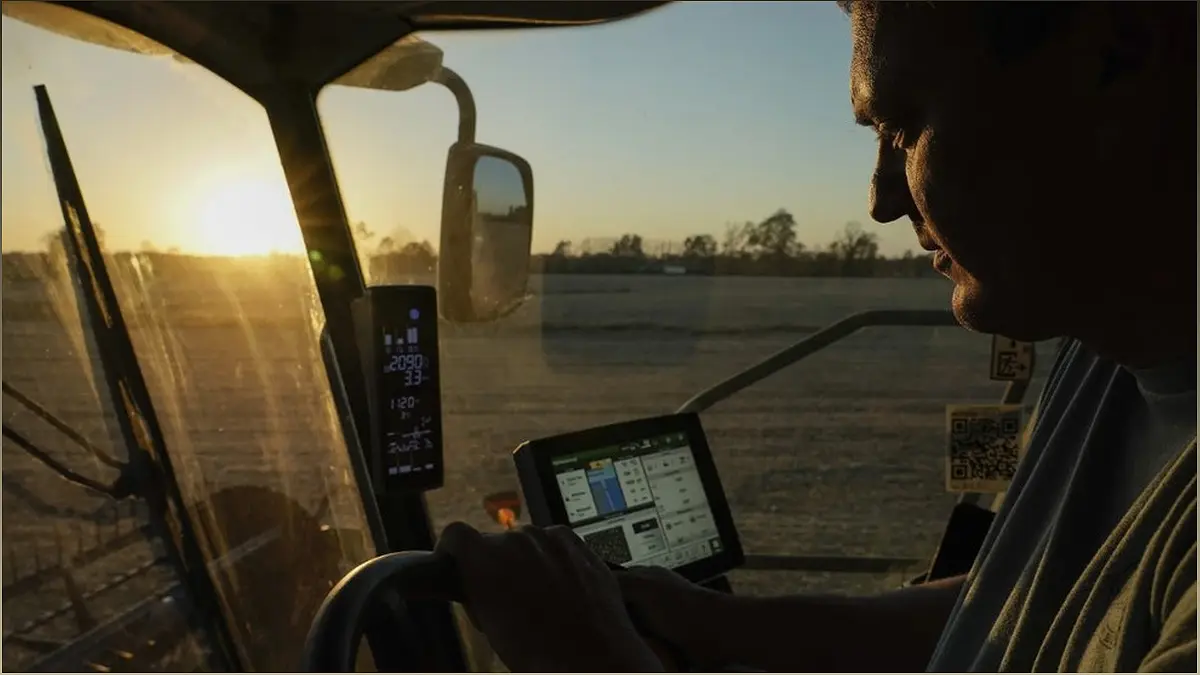Climate change is posing significant challenges for farmers, particularly smaller to midsize farmers like Justin Ralph from Mayfield, Kentucky. The destruction of a grain elevator in Mayfield, caused by a tornado outbreak in 2021, has forced farmers to travel longer distances to transport their grain harvest. In this article, we will explore the consequences of climate change on farmers, the increasing risks they face, and the impact on their livelihoods.
The Increasing Risks Faced by Farmers
Explore the growing challenges farmers face due to climate change and extreme weather events.
Climate change has brought about a range of risks that farmers, particularly smaller ones like Justin Ralph, must confront. Extreme weather events, such as the tornado outbreak in Mayfield, Kentucky, have become more frequent and intense, causing destruction and disruption to farming operations.
These events have forced farmers to travel longer distances to transport their grain harvest, leading to increased fuel costs and added strain on their operations. Additionally, the loss of infrastructure, such as the grain elevator in Mayfield, has further compounded the challenges faced by farmers.
As climate change continues to amplify extreme weather events, it is crucial for farmers to adapt and find ways to mitigate the risks they face. This includes exploring alternative farming practices, investing in resilient infrastructure, and advocating for policies that support sustainable agriculture.
The Impact on Small and Midsize Farms
Discover how smaller farms are more vulnerable to the consequences of climate change compared to larger farms.
Smaller farms, like Justin Ralph's, are particularly vulnerable to the impacts of climate change. Unlike larger farms, they often lack the resources and infrastructure to effectively manage the risks associated with extreme weather events.
Climate change has led to an increase in flash droughts, heavy rainfall, and tornado- and hail-spawning storms in the mid-Southern states, including Kentucky. These events can have devastating effects on smaller farms, leading to crop loss, increased expenses, and financial instability.
Furthermore, the consolidation of farmland, driven in part by climate change, has made it even more challenging for smaller farms to survive. The lack of infrastructure, such as grain storage, further exacerbates their difficulties.
The Need for Crop Insurance and Specialized Crops
Explore the importance of crop insurance and the challenges faced by smaller farms in insuring specialty crops.
Larger farms have more options to manage the risks associated with climate change, including crop insurance. The affordability of crop insurance increases when applied to larger areas, making it more accessible for larger farms.
On the other hand, smaller farms often turn to specialty crops like watermelon or tomatoes to increase profits. However, these crops are not easily insured, leaving farmers like Justin Ralph more vulnerable to financial losses in the event of extreme weather events.
Efforts are being made to address this issue, with calls for more affordable and accessible crop insurance options for smaller farms, as well as the development of innovative risk management strategies specifically tailored to specialty crops.
The Impact on Farmers in the Midwest
Learn about the challenges faced by farmers in the Midwest due to climate change and its effects on crop health.
Climate change is not limited to Mayfield, Kentucky; it is also affecting farmers in the Midwest. Increasing summertime humidity has led to the spread of diseases in crops like wheat, barley, and oats, reducing yields and quality.
Higher nighttime temperatures, another consequence of climate change, cause heat stress on crops, further impacting their health and productivity. Additionally, irrigation systems, which are often used to combat droughts, can end up submerged in water after sudden floods, rendering them ineffective.
These challenges highlight the urgent need for farmers in the Midwest to adapt their farming practices, invest in resilient infrastructure, and explore innovative solutions to mitigate the impacts of climate change on their livelihoods.
The Consolidation of Farmland and Changing Dynamics
Examine how climate change contributes to the consolidation of farmland and the challenges faced by smaller farms.
Climate change is not only reshaping weather patterns but also the dynamics of farmland. The increasing risks and challenges associated with climate change have led to the consolidation of farmland, with larger farms getting larger.
Smaller farms, like Justin Ralph's, struggle to survive due to changes in weather patterns and the lack of infrastructure, such as grain storage. While climate change plays a significant role in this consolidation, other factors like a corporate mentality and changing morals also contribute to the growth of big farms.
It is crucial to address these challenges and ensure the sustainability of smaller farms. This includes supporting policies that promote diversified farming practices, providing access to resources and infrastructure, and fostering a sense of community among farmers.

